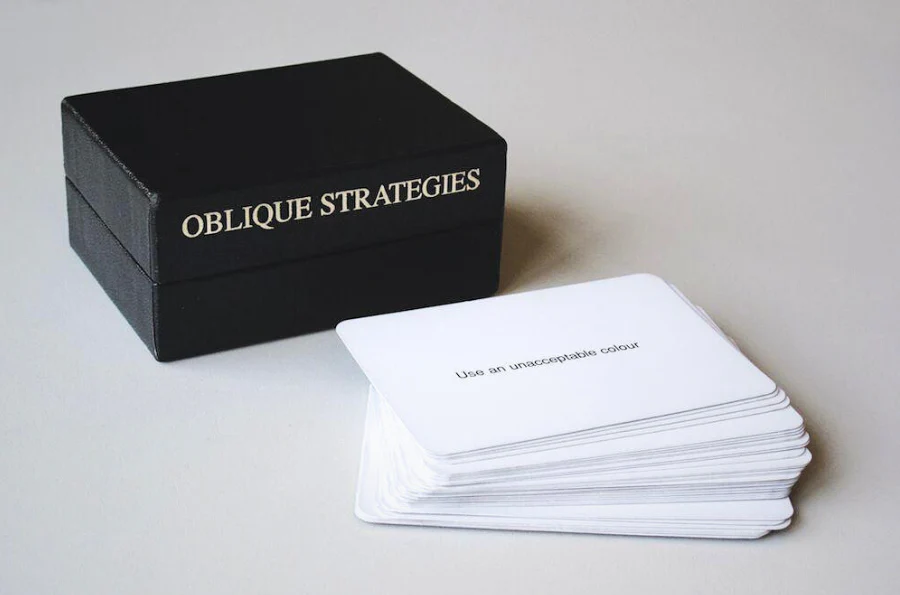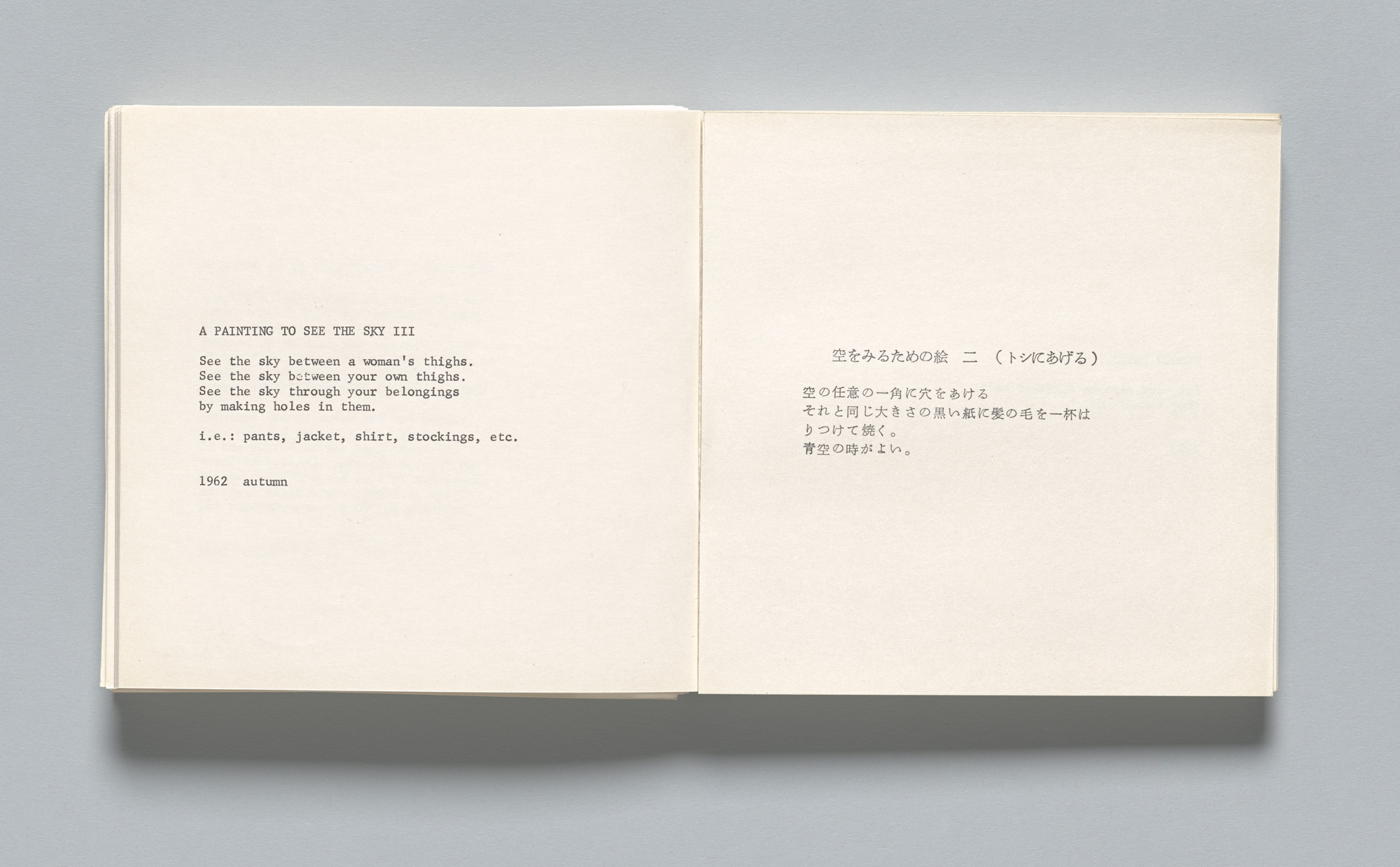P3 Game Cards (Workshop Makeup Assignment)

Oblique Strategies, by Brian Eno
"Gamification" is an informal umbrella term for the use of video game elements in non-gaming systems to improve user experience (UX) and user engagement. - Gamification: Using game design elements in non-gaming contexts, by Sebastian Deterding, Miguel Sicart, Lennart Nacke , Kenton O’Hara, and Dan Dixon
Oblique Strategies were really a way of getting past panic by reminding myself that there were broader considerations than the ones I could remember in the studio... So when I got into a panic, thinking, 'where is this going? It's not going anywhere', I'd pull out one of those strategies and it would tell me something... – Brian Eno on Oblique Strategies
A game is a conflict. That’s true whether two teams are facing off for a Basketball (1891) game, a handful of friends are role-playing around a kitchen table, or you are absorbed in your latest smartphone puzzle addiction. Every game pits players, with or against each other, within a system of conflict. Conflict might sound negative, like some kind of antagonistic competition. In fact, the conflict in games is always in some way collaborative. This is because everyone participating agrees, voluntarily, to take part in the game together. (If we’re being forced to play, it’s not really play.) We all decide to spend the next couple of minutes —or hours, or weeks—within the space of play and together keep the struggle of the game going. – The Rules We Break, Eric Zimmerman
Gamification is a common tactic used in UI Design to drive engagement and create incentives for behaviors that may not have them – most often with the goal of driving the user to spend money. However, games and play are a powerful and meaningful device to connect with each other, spark creativity, and think in new ways.

Pokemon TCG incentives
For this assignment, everyone will create 2 cards that can be played as a game. 1 card will be for a game you can play by yourself, and 1 card will be played with 2 or more players, both games have the purpose to spark creativity.

Octalysis by Yu-kai Chou
Although games and gameification have become a powerful marketing and engagement tool for many digital products. For instance, DLC, "Likes", "Re-Tweets", etc. are all some form of "user" manipulation, with Dark Patterns1 standing out as an anti-social endpoint.

Grapefruit by Yoko Ono
However, games have long been used as tools for personal and social creativity. From Brian Eno's Oblique strategies – a series of cards that offer challenging constraints that can be applied to projects, to Yoko Ono's Grapefruit – a book of "event scores" which can be interpreted flexibly or exist soley as thought exercises, prompt based works have long been creative games for making art. Furthermore, games give us a framework to engage with each other in (usually) safe ways that teach us how to collaborate and disagree.
In this exercise we'll strive to share a new game (or a modified version of games we like) that can help unlock solitary and collaborative creativity.
Files
Instructions
- Use this template as a basis for your gamecard design
- Add your instructions to your game card – keep in mind the Oblique Strategies, and other Conceptual Art prompts, rather than making strict and complex games. You should create two separate cards – one for a game you play by yourself, and one for a game with 2 or more players
- Create an appropriate illustration for your games and place them in the template
- Add meta information, including the number of players, but also could include other game mechanics or easter eggs
- Designer boarders, colors, select typefaces, etc.
- Export a digital file suitable to show on the web (.png) and a print-ready file (.pdf) of each game card and link to them from your class website and share with Chris via KakaoTalk
Make sure to send a link to Chris with your game cards by June 22.
Requirements
- 2 game cards (one that can be played alone, and one to be played with 2 or more players)
- Each card exported as a .png and .png
References
- Oblique Strategies by Brian Eno and Peter Schmidt
- Oblique Strategies PDF by Brian Eno and Peter Schmidt
- The Thoughts Behind the Thouhgts by Peter Schmidt
- Grapefruit by Yoko Ono
- Statements by Lawrence Weiner
- IDEO Method Cards
- Deceptive Patterns
- Online Version of Oblique Strategies by u/gazelles
- Deep Fun
- Gamification to improve our world: Yu-kai Chou at TEDxLausanne
- The Octalysis Framework for Gamification & Behavioral Design by Yu-kai Chou
- The Rules We Break by Eric Zimmerman
- Sample game from the Rules We Break
Resources
Footnotes
1. A dark pattern (also known as a "deceptive design pattern") is a user interface that has been carefully crafted to trick users into doing things, such as buying overpriced insurance with their purchase or signing up for recurring bills. User experience designer Harry Brignull coined the neologism on 28 July 2010 with the registration of darkpatterns.org, a "pattern library with the specific goal of naming and shaming deceptive user interfaces". In 2023, he released the book Deceptive Patterns. – Wikipedia